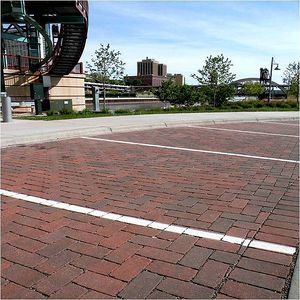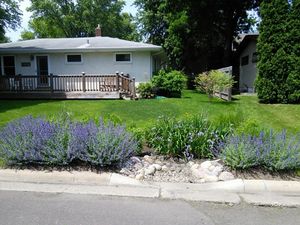
Difference between revisions of "Stormwater infiltration Best Management Practices"
m |
m |
||
| Line 3: | Line 3: | ||
[[file:RG pic1.jpg|thumb|300px|alt=photo of a rain garden|<font size=3>Bioinfiltration (rain garden) in a residential development. Photo courtesy of Katherine McLellan.</font size>]] | [[file:RG pic1.jpg|thumb|300px|alt=photo of a rain garden|<font size=3>Bioinfiltration (rain garden) in a residential development. Photo courtesy of Katherine McLellan.</font size>]] | ||
| − | {{alert| | + | {{alert|Infiltration practices are considered green infrastructure practices.|alert-success}} |
Infiltration Best Management Practices (BMPs) treat urban stormwater runoff as it flows through a filtering medium and into underlying soil, where it may eventually percolate into groundwater. The filtering media is typically coarse-textured and may contain organic material, as in the case of bioinfiltration BMPs. These BMPs are sites ranging from small to relatively large. They are primarily designed for removal of stormwater runoff volume and pollutants in that runoff. They are effective at removing total suspended solids (TSS), particulate phosphorus, metals, bacteria, nitrogen, and most organics. Soluble pollutants such as chloride and nitrate typically through these BMPs and into underlying groundwater. | Infiltration Best Management Practices (BMPs) treat urban stormwater runoff as it flows through a filtering medium and into underlying soil, where it may eventually percolate into groundwater. The filtering media is typically coarse-textured and may contain organic material, as in the case of bioinfiltration BMPs. These BMPs are sites ranging from small to relatively large. They are primarily designed for removal of stormwater runoff volume and pollutants in that runoff. They are effective at removing total suspended solids (TSS), particulate phosphorus, metals, bacteria, nitrogen, and most organics. Soluble pollutants such as chloride and nitrate typically through these BMPs and into underlying groundwater. | ||
Revision as of 21:28, 16 February 2017
Infiltration Best Management Practices (BMPs) treat urban stormwater runoff as it flows through a filtering medium and into underlying soil, where it may eventually percolate into groundwater. The filtering media is typically coarse-textured and may contain organic material, as in the case of bioinfiltration BMPs. These BMPs are sites ranging from small to relatively large. They are primarily designed for removal of stormwater runoff volume and pollutants in that runoff. They are effective at removing total suspended solids (TSS), particulate phosphorus, metals, bacteria, nitrogen, and most organics. Soluble pollutants such as chloride and nitrate typically through these BMPs and into underlying groundwater.
These BMPs, when designed with no underdrain, infiltrate the entire stormwater runoff volume for which they were designed.
- Permeable pavement (+)
- Tree trench/tree box
- Bioretention - bioinfiltration
- Note: Bioretention practices are often called Rain Gardens
- Infiltration - this links to the following practices
- Infiltration trench, including dry wells
- Infiltration basin
- Underground infiltration
- Swale with check dam
Other BMPs can be designed to infiltrate stormwater runoff.
Related pages
- BMPs for stormwater infiltration
- Overview of stormwater infiltration
- Stormwater infiltration
- December 15 webinar (powerpoint and link to presentation)

